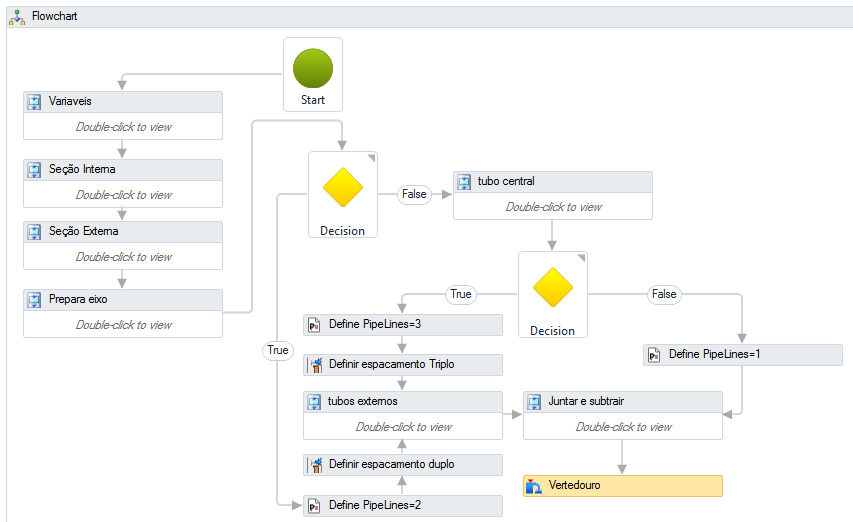SOLIDOS Modeler - SWMM Links - Weir
Weirs are used to model outlet and diversion structures in a drainage system. Weirs are typically located in a manhole, along the side of a channel, or inside a storage unit.
They are represented internally in SWMM as a link connecting two Nodes, where the dam itself is placed at the node a amount. A gate can be included to prevent backflow.
When you want to define a device as a Weir, you must add the tool
 Weir
to the Constructor:
Weir
to the Constructor:

When adding the tool
 Weir, fill in your properties, in the tool's properties frame:
Weir, fill in your properties, in the tool's properties frame:

In the Constructor, the following properties must be filled in:
- Identification
- Name - name of the activity
The point name must follow the naming rules
- Description - when the name of the activity is not enough to give context to the activity, use the description field
- SWMM
- Discharge Coefficient - Discharge coefficient for flow through the central portion of the Weir
- Weir Curve -
 Optional Weir Curve that allows the central discharge coefficient to vary depending on the manometric head
Optional Weir Curve that allows the central discharge coefficient to vary depending on the manometric head
- Retention Device - YES, if the Weir has a gate that prevents backflow,
NO if not
- Can Overload - YES if the Weir can overload (has a water level upstream higher than the height of the opening) or
NO if you can't
- Type of Weir
- Type of Weir - Five types of Weirs are available, each incorporating a different formula to calculate flow as a function of area, discharge coefficient and head difference across the Weir:
- Transversal - rectangular shape
For this case, fill in:
- Contractions - Number of final contractions for a TRANSVERSE or SIDE dam whose length is shorter than the channel in which it is placed. Either 0, 1, or 2, depending on whether no end, one end, or both ends are chamfered to the sidewalls
- Side flow - rectangular format
For this case, fill in:
- Contractions - Number of final contractions for a TRANSVERSE or SIDE dam whose length is shorter than the channel in which it is placed. Either 0, 1, or 2, depending on whether no end, one end, or both ends are chamfered to the sidewalls
- V-notch - triangular shape
For this case, fill in:
- Side Slope - Slope of the side walls (width/height)
- Trapezoidal - trapezoidal shape
For this case, fill in:
- Side Slope - Slope of the side walls (width/height)
- Discharge Coefficient - Discharge coefficient for flow through the triangular ends of a TRAPEZOIDAL weir
- Highway - wide crest rectangular dam used to model road crossings
For this case, fill in:
- Road Width - Vertical height of the Weir opening
- Road Surface - Type of road surface
- Horizontal Length- Horizontal length of the Weir opening
- Vertical Height - Horizontal length of the Weir opening
This is a property that depends on the geometry of the Weir, so it must be tied to its geometry, for example:

In the image above, Height is defined in the properties frame of the model:

![]() Weir
to the Constructor:
Weir
to the Constructor:

![]() Weir, fill in your properties, in the tool's properties frame:
Weir, fill in your properties, in the tool's properties frame:


